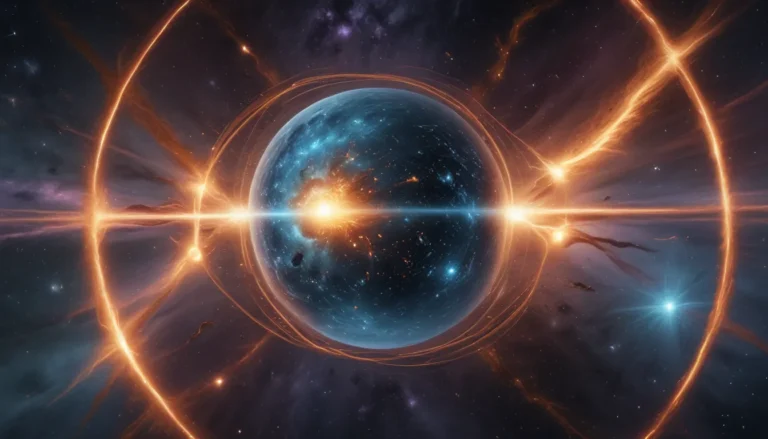A Note About Images: The images used in our articles are for illustration purposes only and may not exactly match the content. They are meant to engage readers, but the text should be relied upon for accurate information.
Have you ever wondered how the speed of light in moving water was measured in the mid-19th century? The Fizeau Experiment, led by physicist Armand Fizeau, remains a groundbreaking scientific endeavor that continues to captivate scientists and enthusiasts alike. In this article, we will unravel the mysteries behind this extraordinary experiment and delve into 19 fascinating facts that shed light on its historical significance and technological impact.
Unveiling the Speed of Light: A Remarkable Achievement
At the heart of the Fizeau Experiment is the quest to measure the speed of light in different media, particularly water. This ambitious goal, set by Armand Fizeau in 1849, marked a significant step forward in our understanding of the fundamental properties of light and its behavior in varying conditions.
The Genius of the Set-Up: Rotating Cogwheels and Interference Patterns
One of the most ingenious aspects of the Fizeau Experiment is its clever set-up, which involved a beam of light passing through a rotating cogwheel and reflecting off a mirror placed kilometers away. By analyzing the interference pattern created by the recombined light waves, Fizeau was able to unravel the effects of moving water on the speed of light.
Confirming Fresnel’s Theory and Influencing Einstein’s Relativity
The Fizeau Experiment played a crucial role in providing evidence for Augustin-Jean Fresnel’s wave theory of light, which posited that light waves could be influenced by their medium of propagation. This confirmation not only advanced our understanding of light but also laid the groundwork for Albert Einstein’s theory of relativity, which revolutionized our perception of space, time, and the speed of light.
Delving into Limitations and Earth’s Motion
While the Fizeau Experiment was a significant step forward, it did have limitations in measuring the absolute speed of light. Nevertheless, it provided valuable insights into the Earth’s motion through space and its impact on the propagation of light, further enriching our knowledge of the cosmos.
From Recognition to Modern Technology: A Lasting Legacy
Armand Fizeau’s groundbreaking experiment earned him accolades, including the prestigious Rumford Medal from the Royal Society of London. Moreover, the principles and techniques utilized in the Fizeau Experiment have been instrumental in the development of modern technology, such as fiber optics and interferometric measurements, shaping the way we perceive and interact with light in our daily lives.
Inspiring Curiosity and Advancements: Pushing Boundaries of Human Knowledge
The Fizeau Experiment continues to inspire aspiring physicists and scientists, underscoring the importance of experimentation, observation, and critical thinking in advancing scientific knowledge. Its legacy lives on through ongoing refinements and innovations in measuring the speed of light, driving further advancements in the field of optics and expanding our understanding of the universe.
Conclusion: A Testimony to Scientific Ingenuity and Exploration
In conclusion, the Fizeau Experiment stands as a testament to human curiosity and the relentless pursuit of knowledge. Through its meticulous measurements and groundbreaking insights, this experiment has reshaped our understanding of light, optics, and the fundamental properties of the universe. As we reflect on the remarkable achievements of Armand Fizeau and his pioneering experiment, we are reminded of the boundless wonders that await our exploration and the endless possibilities that science holds for unraveling the mysteries of the cosmos.
FAQs: Your Questions Answered
- What is the Fizeau Experiment?
-
The Fizeau Experiment is a landmark scientific investigation conducted by Armand Fizeau in 1851 to measure the speed of light in a moving medium.
-
How does the Fizeau Experiment work?
-
In the Fizeau Experiment, a beam of light is split into two parts: one is reflected off a mirror to a rotating cogwheel, and the other is directed to a stationary mirror. By examining the interference pattern of the two beams, the speed of light in the moving water can be determined.
-
What did the Fizeau Experiment reveal?
-
The Fizeau Experiment provided evidence that the speed of light is affected by the medium through which it travels. By measuring the interference pattern, Fizeau demonstrated the variations in light propagation in different conditions.
-
How did the Fizeau Experiment contribute to our understanding of light?
-
The Fizeau Experiment confirmed the wave theory of light and shed light on the effects of a moving medium on the propagation of light, enriching our understanding of the behavior of light.
-
Why is the Fizeau Experiment significant?
- The Fizeau Experiment is significant because it provided experimental proof for the wave theory of light and contributed to establishing a more accurate value for the speed of light. Its impact extends to advancements in optics and technological developments inspired by its principles.
Embrace the Wonder of the Fizeau Experiment
As we delve into the remarkable world of the Fizeau Experiment, we are reminded of the endless possibilities that science offers in unraveling the mysteries of the universe. From confirming fundamental theories to inspiring technological advancements, this groundbreaking experiment continues to shape our understanding of light and push the boundaries of human knowledge. Join us on this fascinating journey of exploration and discovery, as we celebrate the legacy of Armand Fizeau and his extraordinary contribution to the world of physics and optics.






